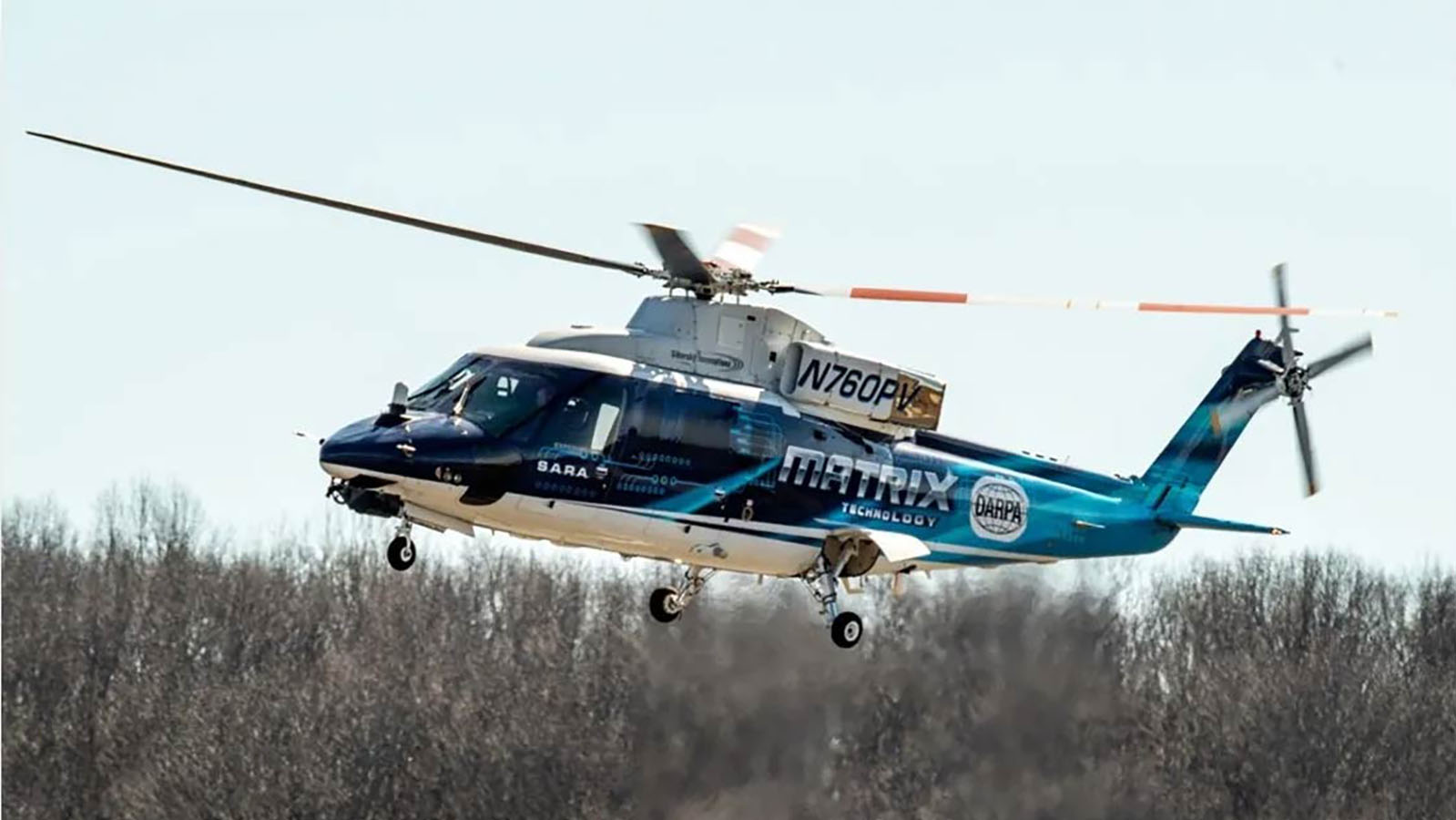Stay Up to Date
Submit your email address to receive the latest industry and Aerospace America news.
Results of flights are due to be published this year
On a clear day in October, at 2,000 feet above Long Island Sound, NASA test pilot Scott Howe and a Sikorsky safety pilot scanned the skies around their S-76 helicopter for a Black Hawk that, by design, was on a collision course with them.
The pilots on each aircraft were ready to intervene, but the S-76, like the Black Hawk, was computer-controlled. Its instructions: Make an evasive maneuver about 1 minute before the potential collision.
This scripted encounter was one of 60 or so that played out between the two helicopters in June and in October off the Connecticut coast. NASA engineers tested software that could help future pilots and operators of electric air taxis and other advanced air mobility aircraft avoid collisions and navigate largely by computer.
Howe looked down at a computer tablet in his lap. It showed a compass-like graphic depicting his heading and a yellow arc showing the heading to avoid colliding with the Black Hawk. When the Black Hawk closed to within 1 minute of Howe, the yellow arc turned into a red wedge and a green wedge appeared — the path to safety — and the S-76 automatically turned into it. The collision avoidance software worked.
Of special concern is navigation through airspace around the planned vertiports that air taxis will fly into and out of. “It’s the most complex situation,” Howe says. That complexity will be compounded by “vehicles that have never been flown, in flight paths that don’t match typical flight paths, at least in their takeoffs and landings. That’s all new, and so we have to figure out how to do that safely.”
At least four teams of researchers this year plan to separately publish their evaluations of two separate collision avoidance software packages, plus the human pilot responses during the flight, and the “middleware” program that allowed the collision avoidance software to take control of the S-76 at the appropriate time. Their findings are meant to help designers and regulators in their efforts to perfect collision avoidance and navigation of air taxis and other AAM vehicles in crowded environments.
The scripted encounters tested two research software packages primarily: ACAS Xr (the Airborne Collision Avoidance System for small rotorcraft), which was designed by the Johns Hopkins University Applied Physics Laboratory to avoid imminent collisions. The other was NASA’s flight path management software, the Autonomous Operations Planner, which reroutes aircraft to avoid potential collisions 3 minutes or more into the future.
Researchers were looking for any weaknesses in the software that hadn’t been uncovered in computer simulations. “Is this type of algorithm feasible? What are the challenges with it? What are the things that the pilots like about it, don’t like about it?” asked Nancy Baccheschi, chief engineer of NASA’s Integration of Automated Systems, the AAM research project that managed the flight tests.
A mix of software controlled the two Sikorsky helicopters throughout the test flights. There were no software breakdowns that required pilot intervention, Baccheschi says.
Another goal was to give the software developers insight into the physical reactions and thinking of the pilots who will fly largely automated air taxis, until perhaps someday when software is ready to fly solo. Post-flight interviews were conducted for that reason.
Consider a scenario in which a pilot decided to intervene and take a longer turn from the yellow arc, for example. “Maybe that’s obvious to pilots but not obvious to researchers or engineers,” Howe says. The research could help determine whether warnings in the software are well-timed and whether the pilot is given enough time to react in specific situations.
“There’s always that tradeoff between are we just annoying you with too much information that is distracting from what you really need to be concerned with? Or are we notifying you too late and you don’t have enough time to adequately create a nice, safe separation distance in a timely manner?” he says. “All of those questions are really at the core of that research.”
Get the latest news about advanced air mobility delivered to your inbox every two weeks.
About AIAA-coms
Related Posts
Stay Up to Date
Submit your email address to receive the latest industry and Aerospace America news.




